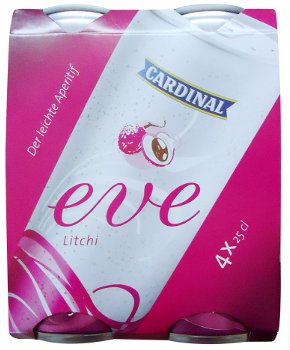Growing consumer awareness of the health benefits associated with their high antioxidant content has helped to drive activity, particularly since the mid 2000s. This has brought many hitherto little known fruits into the mainstream market for the first time, reflected in their growing use as ingredients and flavourings in a wide range of food and drinks products.
Innova Market Insights recorded well over 3,000 product launches marketed on a superfruits platform in the year to the end of May 2011 (www.Innovadatabase.com), up 10% over the previous 12-month period. The soft drinks category, perhaps not surprisingly, saw the greatest number of launches, equivalent to nearly 40% of the total, primarily in the fruit drinks and wellness drinks arenas, but there were products with ‘superfruit’ ingredients launched across most other sectors, led by confectionery, dairy products, fruit and vegetable products and desserts and ice cream.
In terms of types of fruit, pomegranate appears to have emerged as the leader, with nearly 1,300 launches of products with pomegranate recorded on Innova in the June 2010 to May 2011 period, up more than fivefold since 2005. Other fruits are also continuing to grow in popularity, including acai, goji and other berries.
Changing interest in different fruit types can also be seen from a review of activity on the Innova Database, particularly in terms of regional differences. Japan tends to lead in terms of innovation in many instances, and superfruit use is no exception. While pomegranate first emerged as a more mainstream ingredient in Japan, it is now relatively standard there and new product activity is tending to focus on other fruit. A review of launches containing superfruits over the past few months shows that emphasis was on lychees and acerola, ahead of dragonfruit and pomegranate.
In the USA, on the other hand, Innova recorded highest levels of product activity in pomegranate, ahead of blueberry, although interest in acerola also appeared to be increasing, and there was ongoing interest in goji. Moving across the Atlantic, UK launches were focused strongly on pomegranate and berries, particularly cranberries, blueberries and acai, while Germany has seen rising levels of interest in Sanddorn (seabuckthorn).
Meanwhile, new fruits are emerging on the ‘superfruit’ bandwagon, all focusing on high levels of antioxidants, often by comparison with levels in more established superfruits, and often moving into food and drinks following a period of launches in supplement form, both capsules and drinks.
The Maqui berry from Chile (Aristotelia chilensis), also known as the Chilean Wineberry, is one example of this trend, with supplement products starting to appear in the USA and then in Europe from about 2009, initially as capsules and sometimes in combination with other ingredients, then as supplement-style drinks or bars, and finally in more mainstream soft drinks, as exemplified by the maqui berry’s use in Honest Tea drinks in the US from 2010 onwards, firstly in Honest Tea’s Kombucha Maqui Berry Grapefruit Tea and, more recently, as a named ingredient in its Passion Fruit Green Tea. It remains to be seen how far its use will extend in the mainstream, but use by Honest Tea, a Coca-Cola subsidiary, seems to indicate a strong start.
Lu Ann Williams, Head of Research for Innova Market Insights concludes that with so many different types of tropical and exotic fruits, many of which are grown in relatively small quantities, it is difficult to predict where the new success stories in superfruits will come from.
What is almost inescapable is that there will continue to be new varieties put forward as the market develops and these will have to compete alongside more established and familiar varieties. The ability to supply the quantities needed and market their multiple benefits successfully will be key to their future, as well as the willingness of mainstream food and drinks companies to take them up as ingredients in their products.




